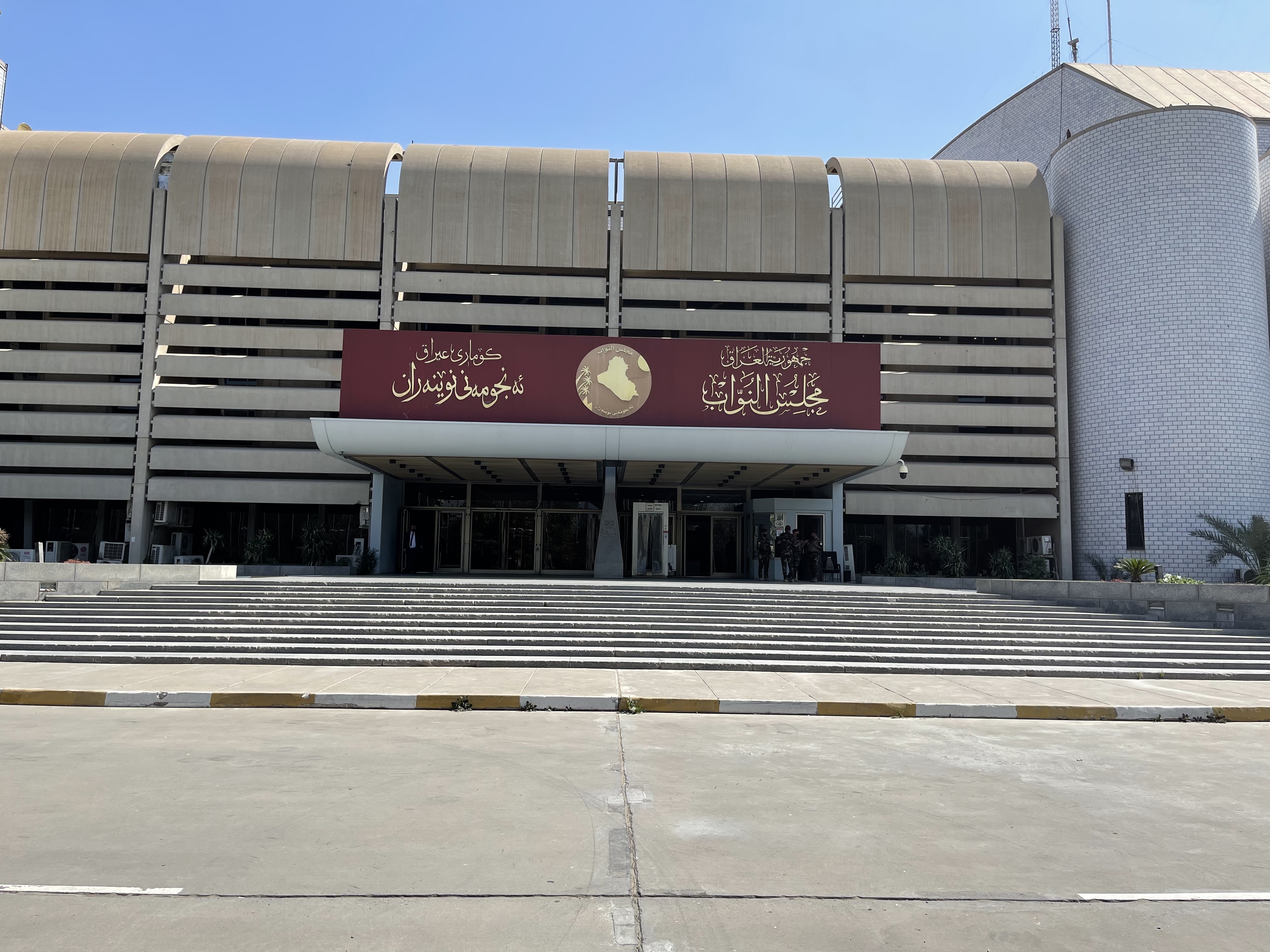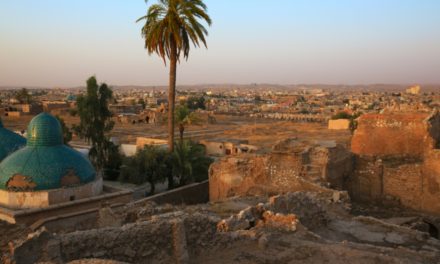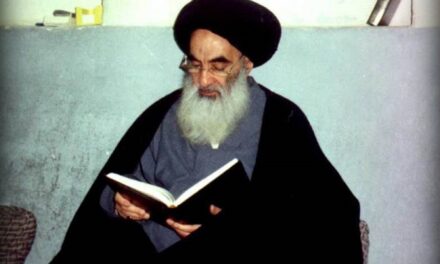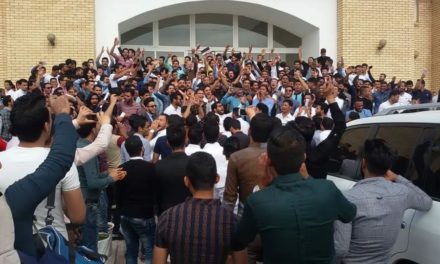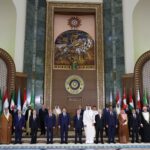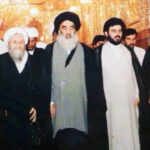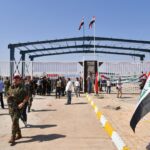On June 10 2014, the terrorist organization formerly known as ISIS (or ISIL), now known as the “Islamic State” or Da’ish, captured the northern city of Mosul and began a rapid advance south towards Iraq’s capital, Baghdad. Within 48 hours, the central city of Tikrit had fallen to the militants. Along with Tikrit, Da’ish militants captured a massive contingent of army recruits and air cadets totaling three to four thousand, most of them in their twenties.
While earlier reports simply stated that the recruits “attempted to flee” the Da’ish onslaught and were subsequently caught, it soon became clear that the events leading up to the savage massacre were much more sinister. The details remain murky to this date but according to survivors’ tales, a desperate sense of panic washed over troops and recruits based at Tikrit Air Academy, also known as Camp Speicher. Uniforms were shed, weapons dropped, civilians clothes donned and troops began to flood out of the base. At least several hundred troops remained at the base, many of whom tried to prevent others from leaving but most of their warnings were ignored.
Tribal Betrayal
Other survivors swear that they were betrayed. Several theories have risen from the ashes of the catastrophic Speicher episode, many of them pointing to collusion between commanders at the base and local Tikriti tribes. Survivors say that officers at Camp Speicher told recruits to leave the base and head back home on a short vacation, reassuring them that the area was safe and dispelling any doubts they had.
Down the road, local Sunni tribesmen and Da’ish militants were waiting. The recruits were told they were safe and that they would be safely transported home. Instead, they were taken to the presidential palaces complex in central Tikrit and nearby sites. Other survivors were rounded up as they were making their own way home. Sunni recruits were separated from their Shi’a colleagues, and given a chance to repent for joining the army. Shi’a recruits weren’t so lucky. They were tortured beyond breaking point to confess. Many died in the process and those who did not were finally led out to the killing fields. At least 1,700 young men were murdered in cold blood, with one wave following another. Many were buried in several mass graves; some containing hundreds of bodies per site, the rest were martyred by a bullet to the head and dumped in the Tigris.
Since the city of Tikrit was recaptured in March and the mass-grave sites found, just under 600 remains (597) of martyrs have been exhumed by forensic teams, according to Iraq’s human rights minister Mohammed al-Bayati. Al-Bayati described the process as “complicated” as “there were several layers of bodies all piled on top of each other. It’s a huge case. It takes a lot of work to identify the victims.” Reports also suggest that around 32 suspected perpetrators of the massacre are now in custody.
As of this moment, if anything is clear, it is the fact that Iraq will never be the same post-Speicher. Had Da’ish’s militants carried out the massacre by themselves, it would have gone down as a monstrous crime committed by the terrorist organization against the people of Iraq. But the substantial participation of local Sunni tribes will reverberate for years to come. It was rumoured that Da’ish militants numbered in the dozens (at least during the initial stages of the incident) while the tribesmen numbered in the hundreds. Such malice, treachery, and brutality simply cannot be brushed under the rug. Da’ish did not coerce these men into participating; they did so willingly.
Not Just Numbers
After decades of war and misery, Iraqi casualties seem to have become nothing but figures in the eyes of westerners, or at least that is what many Iraqis feel like. And for that reason, it is worth taking a moment to absorb the scale of this massacre. 1,700 human beings, tortured, humiliated and dragged to their death in cold blood. They must have thousands upon thousands of relatives grieving their fallen sons, brothers, fathers, cousins and nephews.
When asked what legacy he thinks the Speicher massacre will leave behind, Sadiq, a government employee in Baghdad, said, “I think the massacre will leave an impact on the martyrs’ families and on society as a whole. Most of these young men were their families’ breadwinners, sometimes their sole breadwinners. Without them, they will struggle and the government can’t be relied on to help them out. The other impact will be on the levels of sectarianism in society. Speicher is yet another massacre in a series of massacres that Iraqis have suffered at the hands of Ba’athists, al-Qa’eda in Iraq and Da’ish. It’s taking a toll.”
Reidar Visser, a respected scholar on Iraq and distinguished blogger, said, “In general, the significance of the massacre is poorly understood in the West. In my estimation, Iraqis see it as an atrocity on par with what happened at Halabja in the late 1980s or during the repression of the 1991 uprising. There will likely be calls for it to be commemorated in ways similar to Halabja and 1991, and dealing with its legacy will be central to any national reconciliation effort following the conflict with ISIS”.
While Iraq is no stranger to blood-curdling acts of violence and barbarity, it seems that large-scale, despicable acts of depravity such as the Speicher massacre have cemented a very simple, yet powerful notion: victory or martyrdom. To put it simply, Da’ish’s disgusting treatment of prisoners of war – which usually entails humiliation followed by, either a bullet to the head, or decapitation – provides more than enough incentive for troops to fight that extra bit harder in order to escape such destiny.
“The Speicher massacre presents explicit evidence of the horrendous, gruesome, and barbaric enemy that Iraq faces. This massacre will go down in Iraq’s history, and future generations will learn that this massacre was the real motivation for the defeat of Da’ish.” remarked Ismael al-Sodani, a retired Brigadier General in the Iraqi Army and former Defense Attaché to the US.
Iraqis also seem to have learned from their past. This is not the first time that jihadists have tried to fan the flames of sectarian war by carrying out a heinous crime against Iraq’s Shi’a population.
On February 22, 2006, several men disguised as Iraqi soldiers entered the al-‘Askari shrine in Samarra, tied up the guards, booby-trapped the shrine and detonated it, causing the dome and much of the structure to collapse. The two ten-story minarets of the shrine were destroyed in an attack a year later. This abhorrent attack on such a holy site sparked one of bloodiest periods in Iraq’s recent history with tens of thousands losing their lives in the mindless, sectarian civil war that ensued.
Future Prospects
“What do we do now? What can we do? Da’ish carried out this massacre in the hope that it will trigger a sectarian war between Sunnis and Shi’as. We can’t give them what they want. We can’t allow their project to be successful. We can’t allow our martyrs’ blood to be the foundation of the project which was designed to destroy our nation,” observed Riyadh Abdul-Latif, a 21-year-old engineering student from Baghdad.
But whilst such a stance is deemed noble by many, we must take into consideration the fact that events such as the Speicher massacre and the ethnic cleansing of minorities – which took place in northern Iraq – hack away at the country’s social fabric. The fact that local Sunni tribes participated in both atrocities raises many difficult questions. What prompted Mosul’s Sunni population to turn on their Shi’a and Christian neighbours? What spurred Tikrit’s tribes to aid and abet Da’ish in their massacre of 1,700 young men, their own countrymen? Will minorities ever be able to return to their homes and settle down? Will they be able to forgive and forget? Recent reports of Yazidis massacring Sunni Arabs in the Sinjar region indicate reconciliation in central and northern Iraq will be a tough process.
The desire for some sort of retaliation is prevalent among Iraq’s wounded Shi’a community. Many declared the successful operation to recapture the city of Tikrit in March as revenge for the massacre. There were reports that properties belonging to the tribes who aided Da’ish in carrying out the massacre were targeted, particularly in the village of Albu Ajeel. The tribe of Albu Ajeel was one of the main tribes that participated in the massacre. However, the damage to the properties was attributed to the heavy fighting, which took place in the area.
“In all honesty, the tribes who helped Da’ish slaughter our boys will never be safe. There will never come a time when these traitors will live in peace. If the government decides to pardon them, Iraqis won’t. I’m more than happy to see harmony and dialogue between Shi’as and Sunnis but these tribes can’t take part in this process. They sold our sons to the takfiris (Da’ish) and for that, we’ll make sure they’ll pay,” asserted 38 year-old Tariq al-Karbala’ie (a pseudonym to hide his identity), a taxi driver in the holy city of Karbala.
“Little Room for Morality”
Fanar Haddad, who is a research fellow at the Middle East Institute, National University of Singapore, says that the reactions that Iraqis had to Speicher, and the symbolism it produced “speak of a divided society at war whereby atrocities become the currency in which competing victimhoods play out”. He adds that in the case of Speicher, “Shias will use it to underline their sense of victimhood – and consequently their sense of entitlement – and Sunnis (or those against the prevailing political order) would be reluctant to validate that.” Haddad acknowledges that neither side would be willing to validate the other’s narrative of an atrocity because doing so would be to cede contested ground in the ongoing competition of sectarian victimhoods. “In such an environment, there is very little room for morality to dictate responses to atrocities independently of the sectarian entrenchment that marks this conflict.”
Nevertheless, Iraq’s Shi’a majority have shown admirable restraint whilst weathering this ferocious jihadist onslaught and the immoral transgressions it has brought with it. Max Abrahms, a professor of political science at Northeastern University and a member at the Council on Foreign Relations, professed his fascination at the discipline displayed by Iraq’s Shi’a as a community in the face of this atrocity, saying, “The Speicher Massacre highlights both the barbarity of the [self-proclaimed] Islamic State and the restraint of Iraqi Shi’a. Given the continuous efforts of the Islamic State to spark an all-out sectarian war, I have been impressed that the Shi’a of Iraq have not responded in kind.”
Al-Iraqiya state TV recently aired an interview with one of the alleged Speicher Massacre perpetrators. He was shown a video of that fateful day and identifies himself as the masked man who runs back and forth, as he grabs Shi’a cadets and brings them to the edge of a former presidential palace where a second perpetrator fires a single shot into each victim. The alleged executioner admits that “they” [Islamic State] convinced him that this must be done. He confirms to the interviewer that he is a religious man who prays regularly.
When asked about his thoughts regarding the interview, Basim, a 44 year-old bookseller in Baghdad who preferred to go by his first name, said this helps illustrate the dichotomy within Sunni Islam that a devout, practicing Muslim can easily be misled into committing genocide if given the right opportunity. “It’s hard to understand how a man can finish his prayers, and turn around and kill hundreds in cold blood. When we watch the footage, you can see the eagerness in their movements; you can see that they were enjoying what they were doing. Which passage in the Qur’an permits the slaughter of hundreds of young men like that?”
When asked what he would say to the mothers of the victims, the alleged perpetrator replied with “May God give them patience”.


